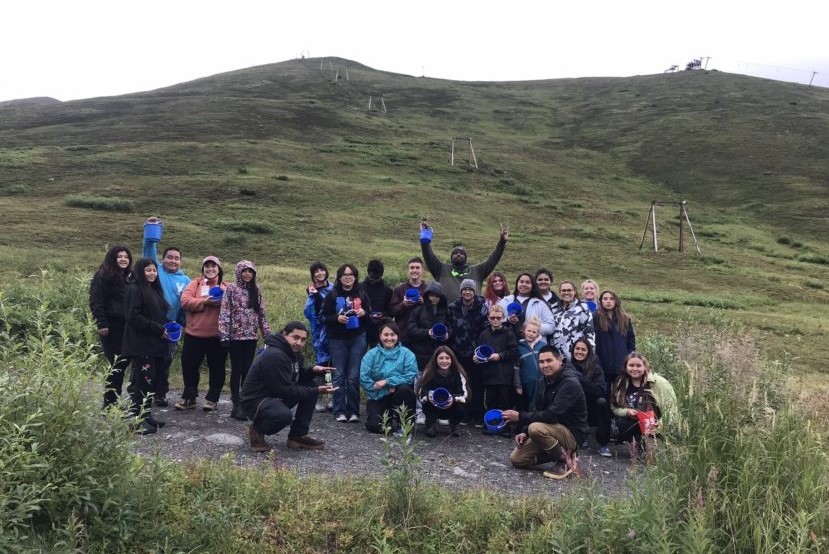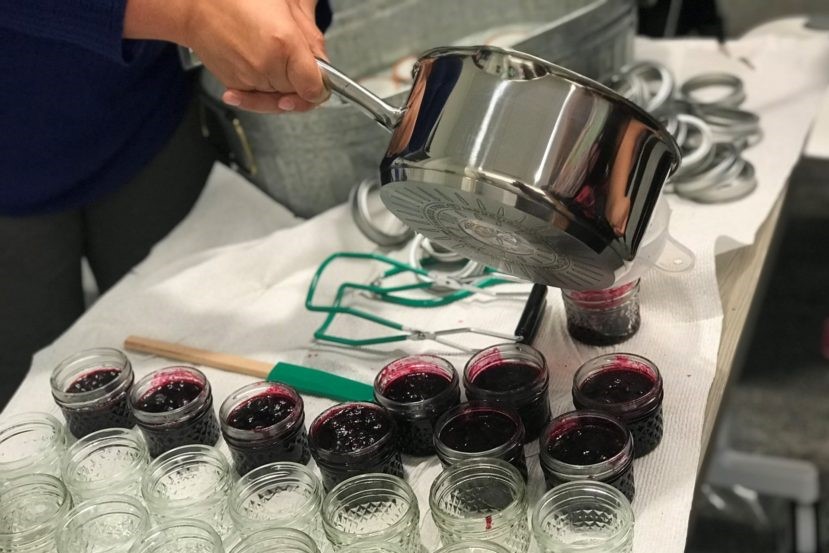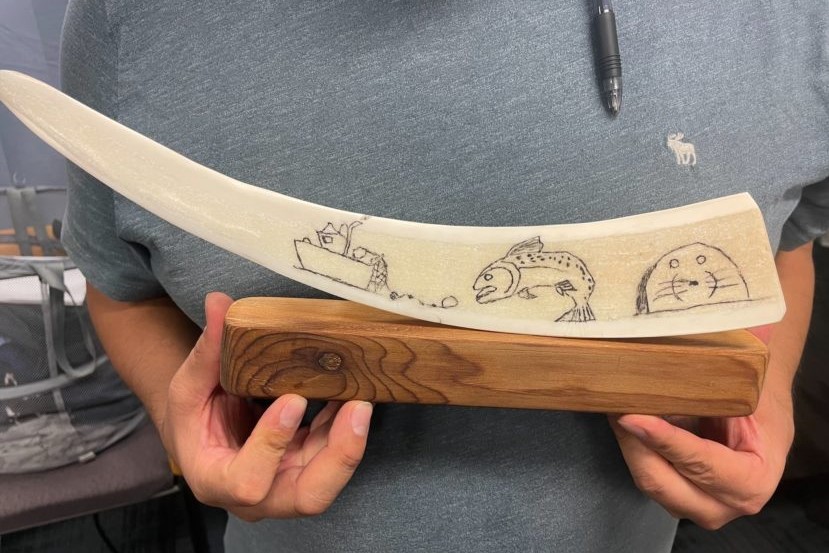[ad_1]
 The CITC organizes youth berry picking trips as part of its addiction prevention services. (Photo courtesy of CITC)
The CITC organizes youth berry picking trips as part of its addiction prevention services. (Photo courtesy of CITC)
This summer, the Cook Inlet Tribal Council took youth out berry picking as part of their addiction prevention program.
CITC is a non-profit tribal organization that calls itself a “culturally sensitive social service organization.” Dr. Angela Michaud is CITC’s Senior Director of Recovery Services.
“With our wild blueberries, we didn’t have enough to make [the jam] for the 50 people in the room,” Michaud said. “So we went to Costco and got some blueberries and mixed them with the wild blueberries and made our jam that way.”
She said adapting village traditions to a city like Anchorage helps young people tap into their culture to improve their health outcomes and lower addiction rates.
“Anchorage is a huge town,” Michaud said. “Is [about] get out there and have that sense of connection.”
 A CITC cultural event involves taking young people to pick berries and then giving them a jar to take home to their families. (Photo courtesy of CITC)
A CITC cultural event involves taking young people to pick berries and then giving them a jar to take home to their families. (Photo courtesy of CITC)
Prevention through youth participation
The CITC has found through surveys that participants do not consistently use substances when doing cultural activities.
“That’s a five-hour period where they can say ‘I didn’t drink, I didn’t do alcohol or drugs,’ and they were happy,” Michaud said.
With these promising results, the CITC is using two new federal grants to put Alaska Native cultural education at the forefront of its addiction prevention programs.
“What we do is implement culture for healing [to] prevent tobacco, alcohol, substance use and suicide,” Michaud said.
With a portion of the money, they can organize monthly cultural events aimed at Alaska Native youth and their family members.
Chris Delgado is from an Inupiaq family and serves as a prevention supervisor, directing these activities for the CITC. He grew up in Anchorage.
“I missed some of the cultural activities that were planned,” Delgado said. “It will slowly be forgotten if we don’t stop and do something about it. As long as we can get young people involved, I think we’re in good shape.”
CITC’s prevention activities include more conventional training, such as how to use naloxone, an opioid overdose reversal drug. But it also offers dance lessons, walrus ivory carving, berry picking, traditional storytelling, ice fishing and hooligan net fishing.
 Young people participate in cultural fang carving activities through the CITC program. (Photo courtesy of CITC)
Young people participate in cultural fang carving activities through the CITC program. (Photo courtesy of CITC)
These programs aim to build the confidence of Native youth and teach life skills that participants can learn and share, Michaud said.
A case for connection
A recent article published in a leading medical journal highlighted that teenagers who feel more connected to their community, peers and families are up to 66% less likely to use substances.
Robert Blum of Johns Hopkins University is an expert on adolescent health and the lead author of the paper. He stressed that studies have long shown that conventional information-based youth addiction prevention strategies have no effect on young people and sometimes even have negative effects. He advocates treating “young people as resources, rather than problems.”
CITC has a program that uses youth in long-term recovery as a resource, hiring them to help teach their peers.
“They can share with others what their experiences were to help them succeed in the program,” Michaud said.
Small details, such as offering food options that are part of traditional native diets, bind these communities of peers together.
“People started to get used to eating the salmon, and this year we were finally able to get them out so we could catch it,” he said. “And they got their own fish and brought it in. It’s just the excitement and the stories that came out of it.”
As a result of this program, he cites a decrease in recidivism rates and an increase in participants completing the program and securing jobs and housing.
“We don’t want to just survive,” Michaud said. “We thrive [when] we brought these things to the table. We were overcoming our adversity, and that has a different feel.”
An inverted model
Michaud says many prevention programs take a Western medical curriculum and just add native words to it. But the CITC team has built its entire curriculum on culture. He says that Western models are secondary.
“You’re teaching them to connect with nature and get people outside, away from distractions, drugs, alcohol and abuse,” Michaud said.
And these events are not just occasional meetings. Many youth participants join one event and then continue to sign up for others, even getting involved in other programs CITC offers to increase employment and high school graduation rates.
One group collected seeds and planted them in a community garden. Once they were ripe, the food went to the Alaska Native Health Center so the patients could eat traditional foods.
“And how this relates to our culture is that we’ve had so much trauma in the last two or three generations that it’s taken away a lot of the culture,” Michaud said.
He says Native Americans and Alaskans lived healthy lifestyles for thousands of years and only in the last few hundred years have they had these addiction-related health problems.
“We were good and then we weren’t,” he said. “And now we go back to what we know and we’re good.”
[ad_2]Source: Alaska Native nonprofit puts culture at the forefront of addiction prevention
Methadone Clinic Nearby – Methadone Clinics New York City – Methadone Clinics USA















